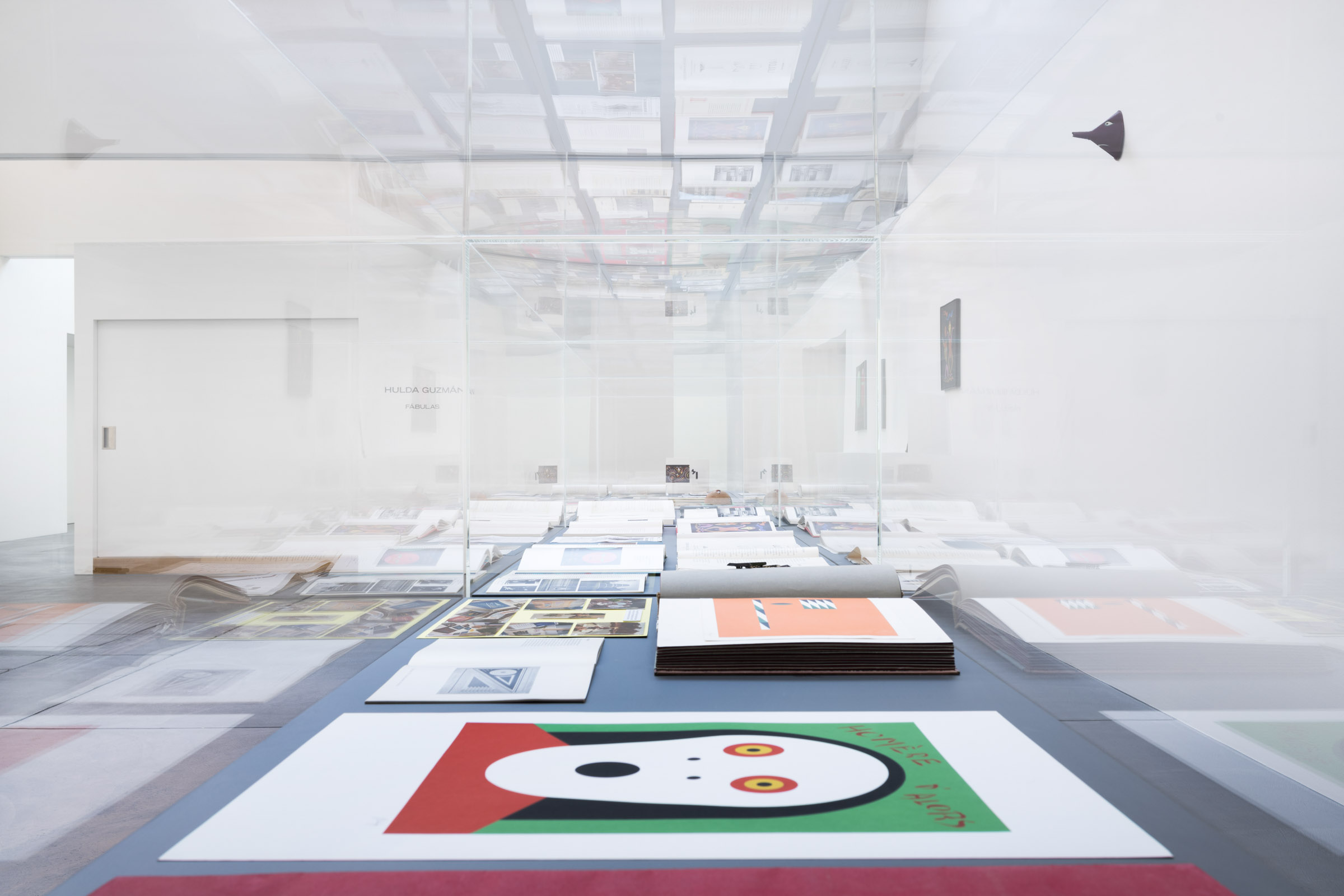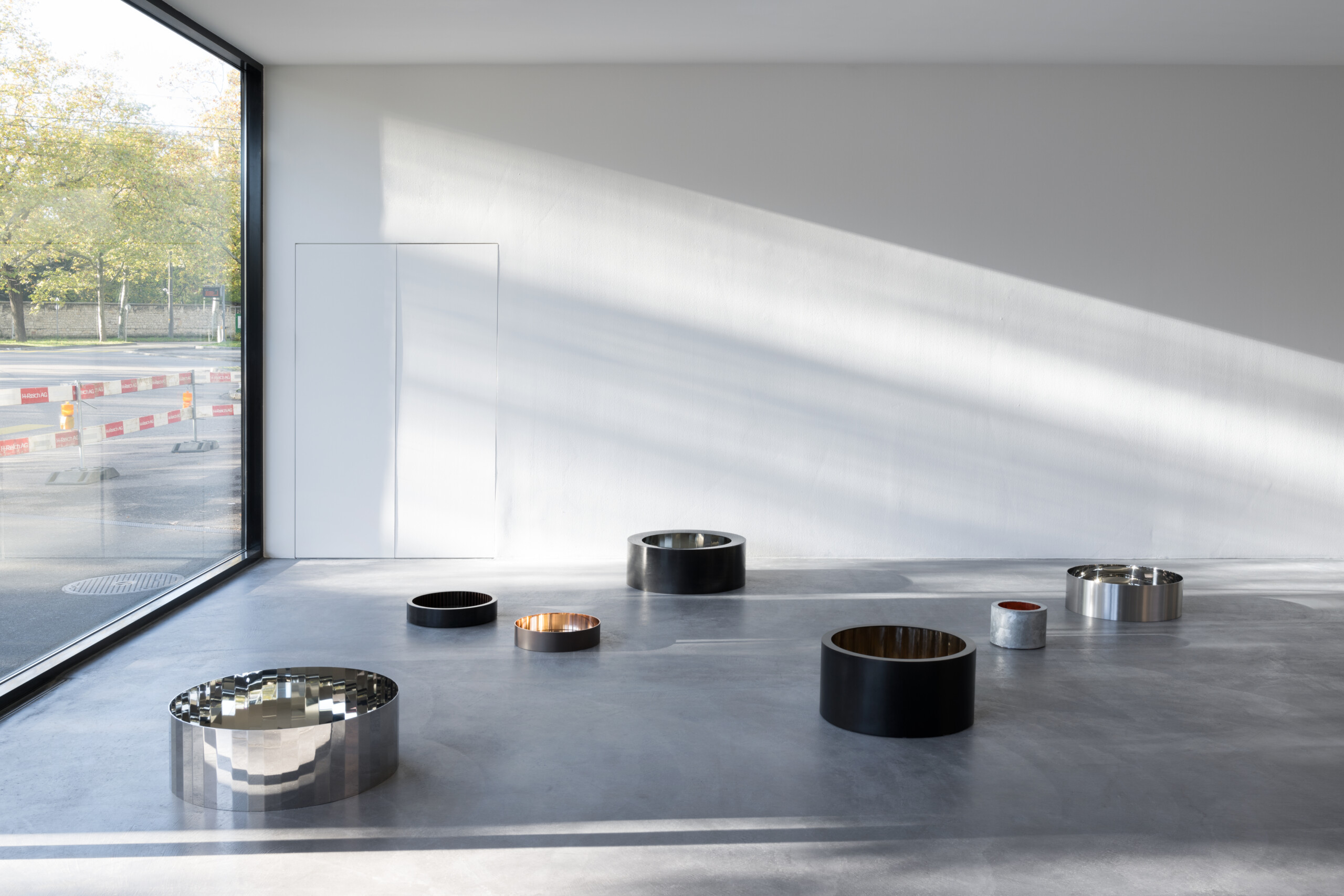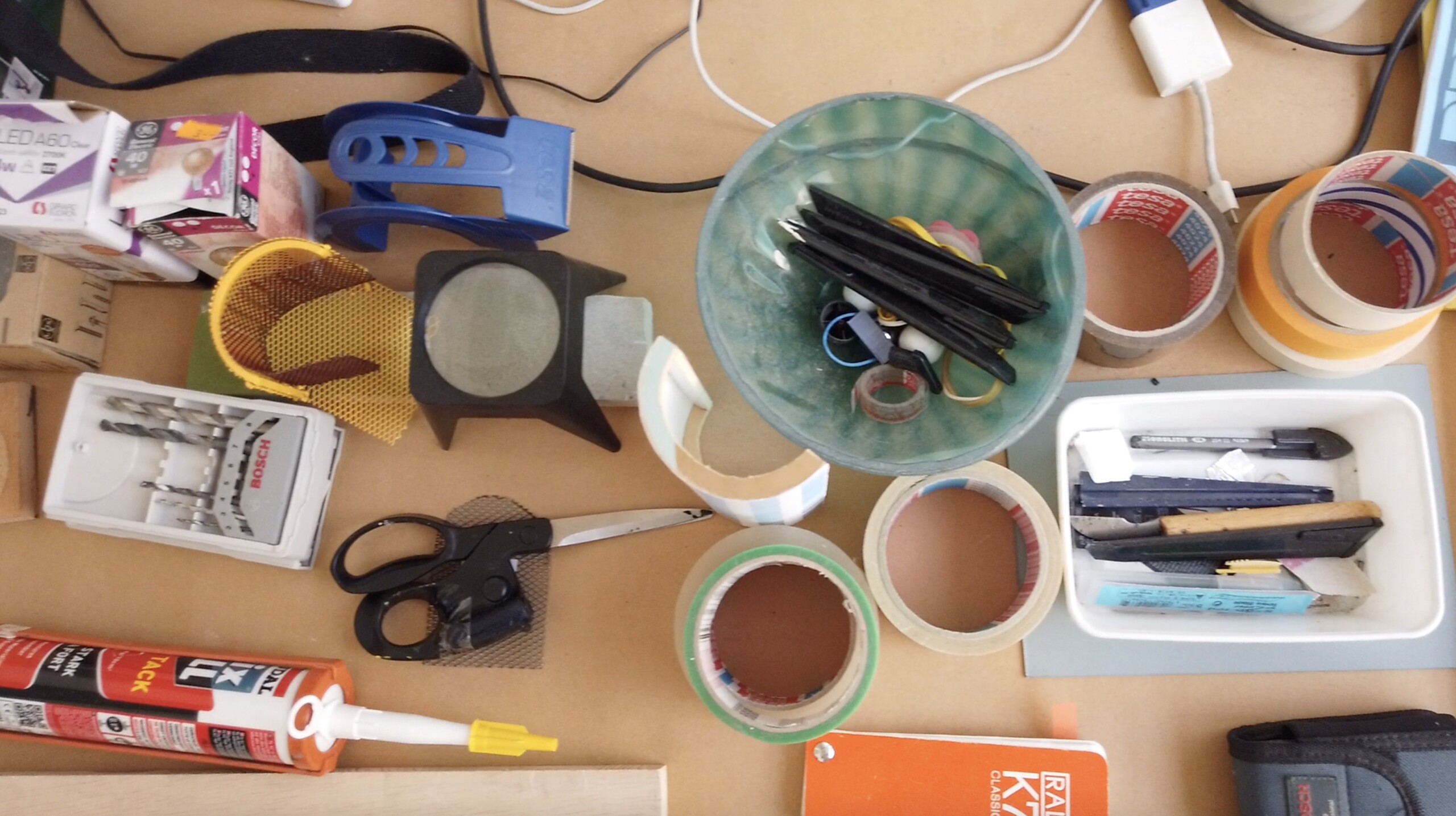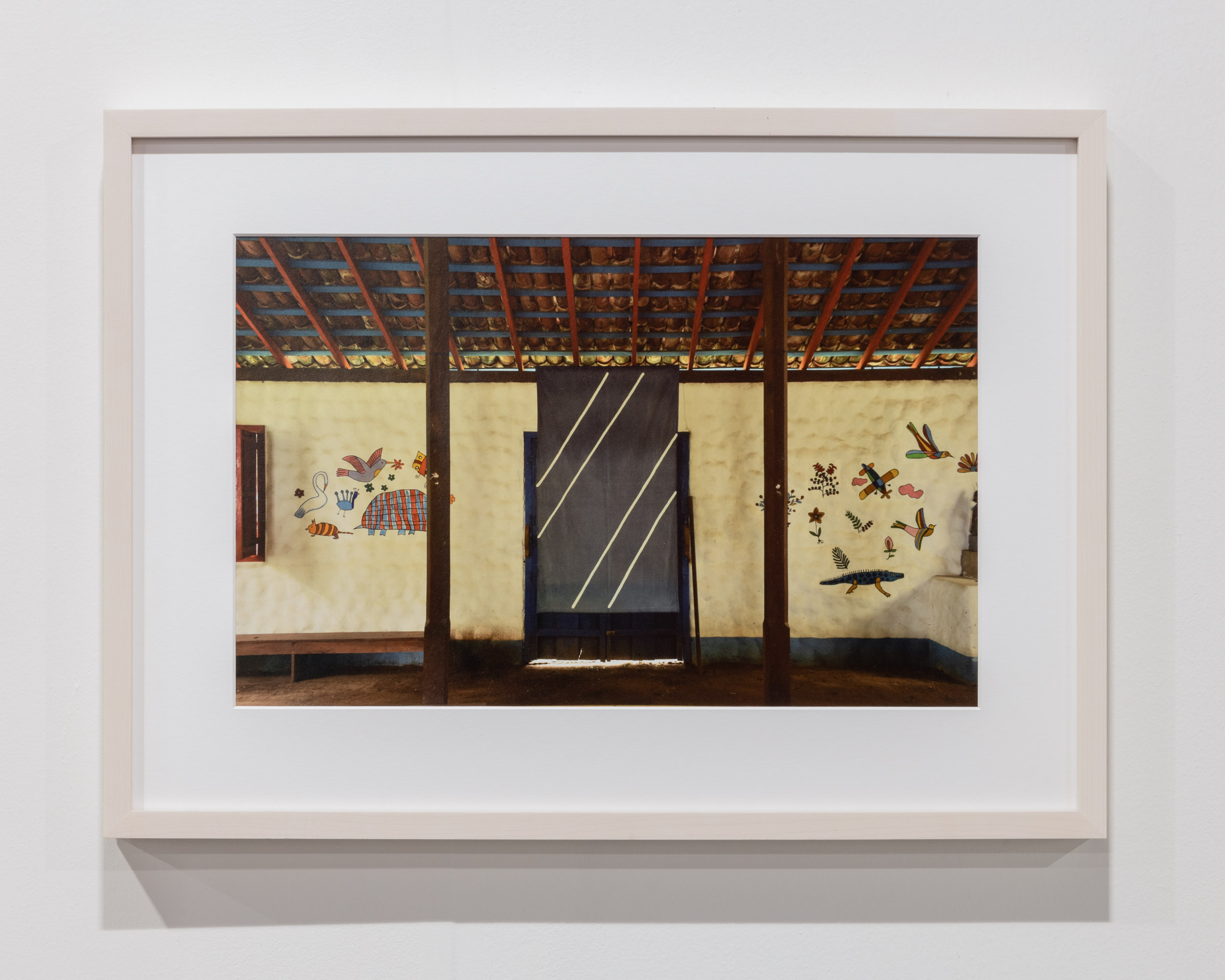10 Facts about Yves Laloy
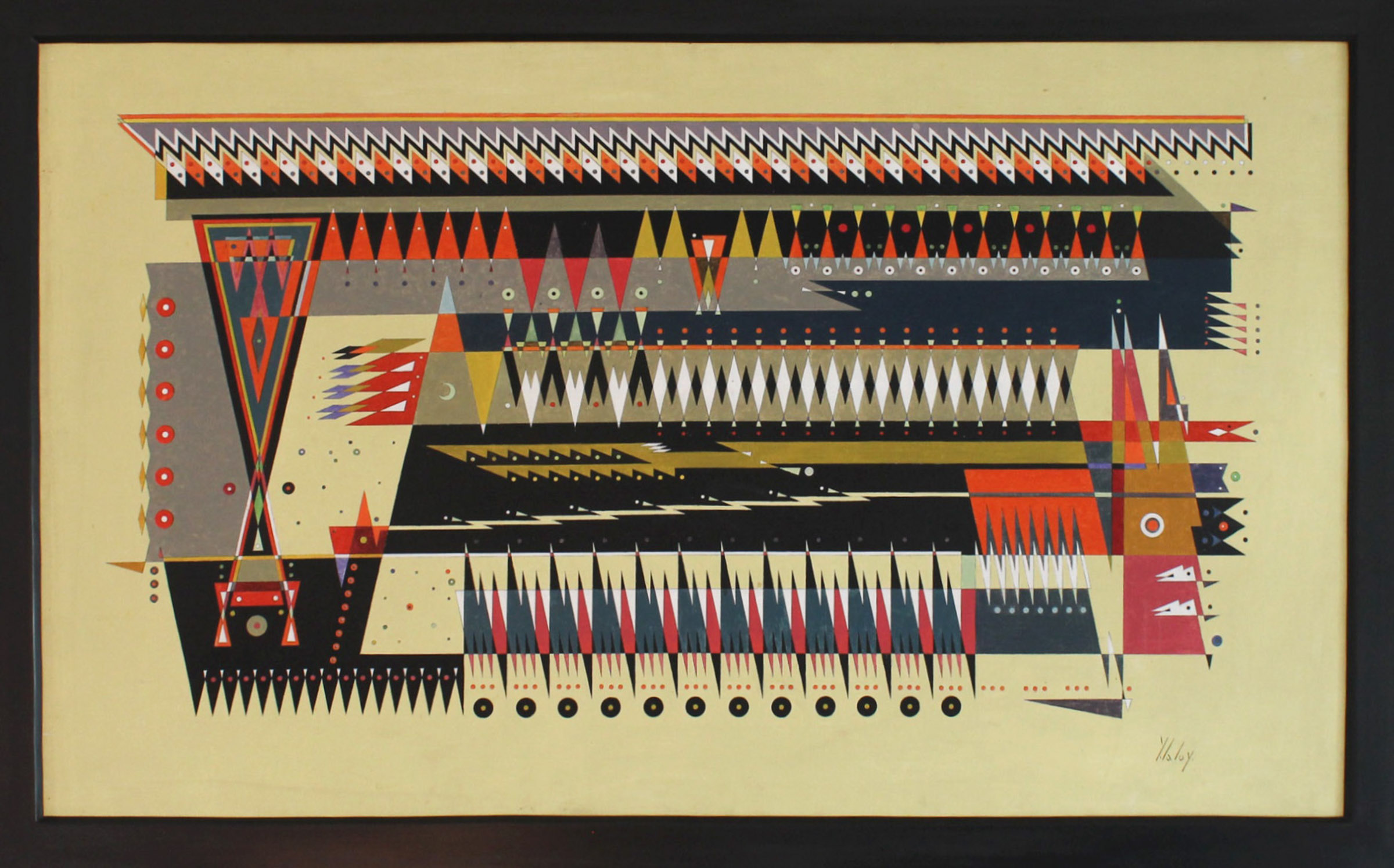
“An architect by profession, a painter by destiny and a sailor at heart”
During the last week of our first archive exhibition at the Basel gallery, we wanted to take a closer look at Surrealist Yves Laloy, who has been represented by von Bartha, since the very beginning of the gallery’s activity – with a first solo show at the gallery in 1972.
Laloy began his career as an architect before turning to painting
In 1947, after completing his studies in architecture and working for a time in his father’s architecture studio, Laloy began painting in his spare time, whilst also working on carnival frescos.
His first exhibitions were in 1950 in Parisian galleries, which were devoted to Surrealism.
He was one of the last discoveries of André Breton – the principle theorist of Surrealism
Together with Konrad Klapheck, he was one of the last discoveries of André Breton, who included them both in his book Le Surréalisme et la Peinture’ and Laloy’s painting ‘Les petits pois sont verts…. Les petits Poissons rouges…’ was even chosen as the title for the second edition, published by Gallimard in 1965.
In 1958, Yves Laloy abandoned architecture for painting and lived in Paris where his wife, Jeanne Beauregard, ran a hotel near the Folies Bergère. It was she who met Geo Dupin, who became, after the closing of her gallery, Inna Salomon’s collaborator at the La Cour d’Ingres gallery, located at 17 quai Voltaire, where surrealist artists such as Jacques Hérold and Picabia, Magritte and Masson were exhibited and where Laloy’s work was first introduced to André Breton. According to Breton, Laloy was the only geometric surrealist and compared his compositions to the sand paintings of the Navajos, which were executed in one day and would have been obliterated by dusk.
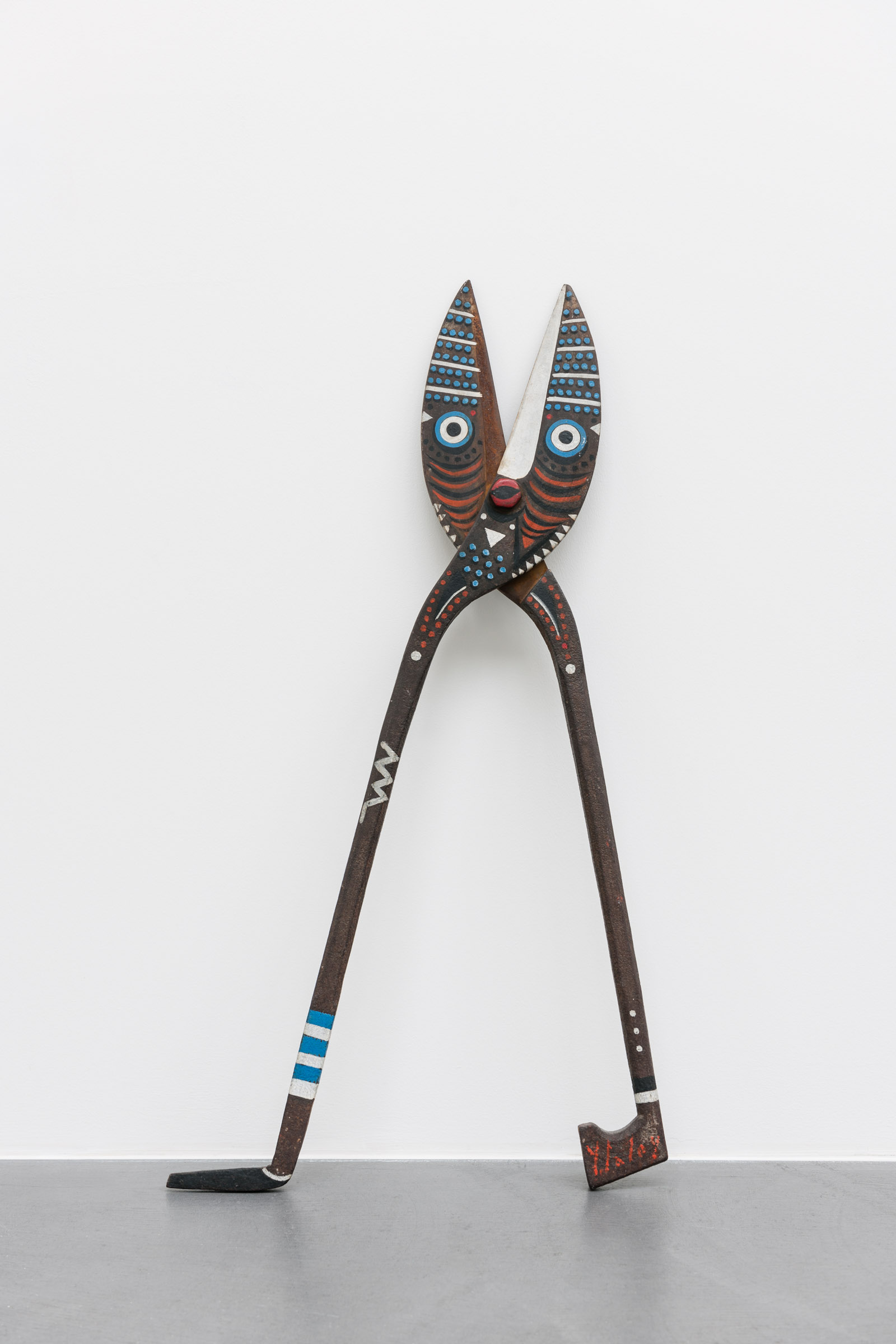
Tongs, 1953-54
Oil on metal
lenght: 94 cm
Living near the sea in Brittany had a lasting effect on his paintings
Nature and in particular everything connected with the sea is ever-present in his work, as are abstract landscapes, the sea, undulating waves, fish and imaginative creatures that crawl across the canvases in his more figurative paintings.
He compared his work to a labyrinth
“My painting is based on a linear design: these are lines that make up a labyrinth traversed by a thread of Ariadne which is the thread of thought. In this labyrinth, I get lost and I save myself.” – Yves Laloy
He never championed the label of Surrealism
Not wanting to limit the scope of his art to a certain manifest, Laloy never officially joined the movement, nor even participated in its meetings or signed a leaflet or a collective declaration. He developed his work around a multifaceted ‘plastic’ vocabulary, ranging from rigorous geometric compositions to undulating, cosmogonic worlds.
Laloy often made use of wordplay in his paintings
Even though he didn’t name himself a Surrealist, he remained close to the movement, especially by way of linguistic wordplay for which he is also known, but he was a loner and his style is unique to this day. In a subtle and playful manner, he titled his works and in part painted the words out on his paintings, as other fellow Surrealists, like Konrad Klapheck did.
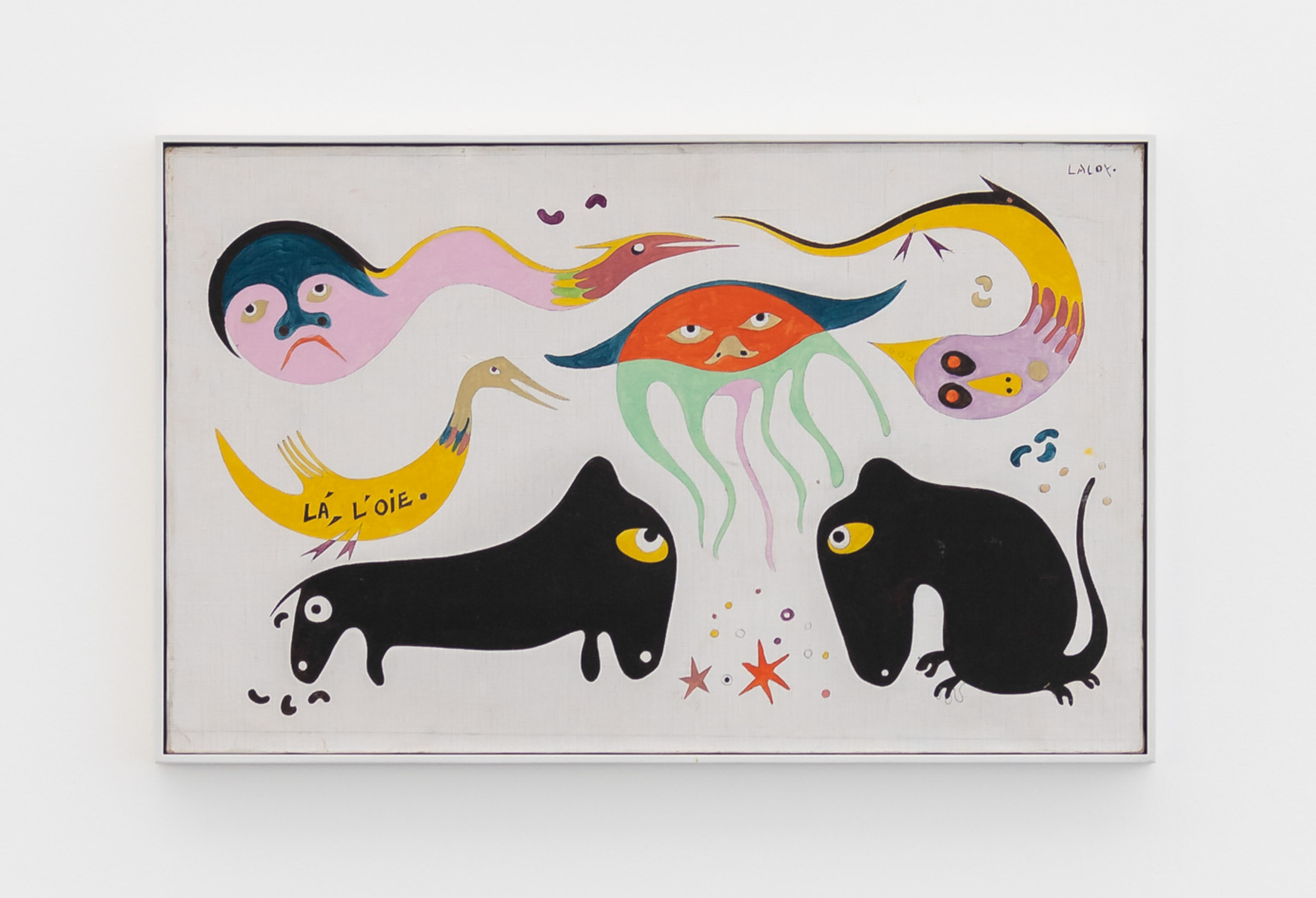
„Via Milano“ or „Là, L’oie“, 1959-60
oil on canvas
38 x 61 cm
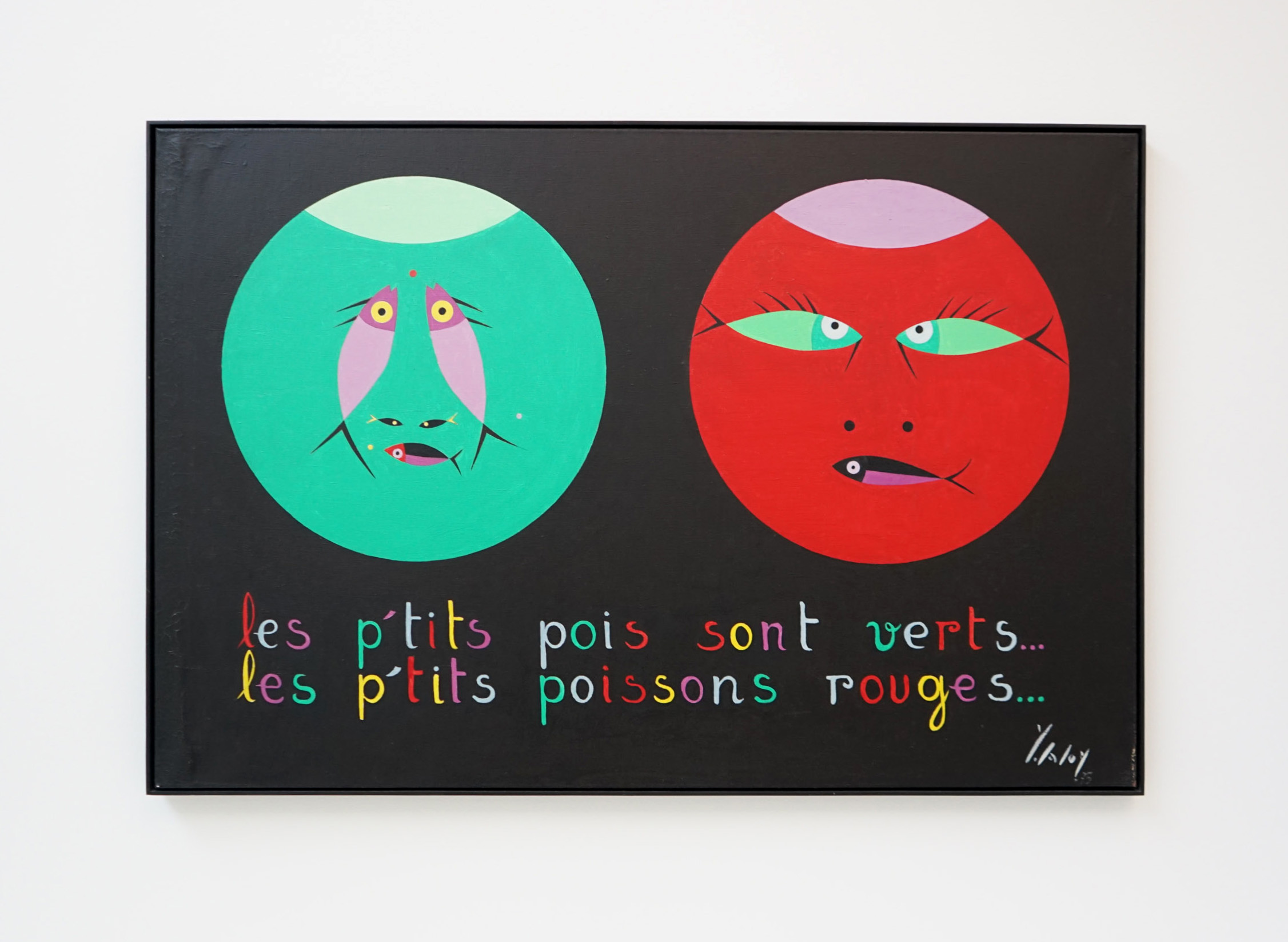
Les p'tits pois sont verts les p'tits poissons rouges, 1973
Oil on canvas
82 x 122 cm (framed)
The story of a world traveller
Laloy travelled to all corners of the globe, including Africa, the US and Middle East. A notable adventure was in 1961, when he embarked on a journey to Newfoundland, where he experimented with the difficult conditions under which sailors live. “Stay on terra firma: never! Better to have your head in the clouds and pass for an artist”.
Laloy wasn’t interested in selling his paintings
Coming from a wealthy family of architects, he was not concerned with the actual sale of his paintings. He would hold back what he could, which in turn didn’t lead to a highly commercial success during his lifetime. Miklos and Margareta von Bartha became aware of the artist through their friend and art lover Carl Laszlo, who had been painted by Laloy. Miklos then went to visit Laloy and his family in their home in Brittany (see images below of another visit in the early 1990’s to the vacation home of Yves and Jeanne Laloy in the South of France).
What Navajo sand paintings have got to do with it
‘Laloy embraced another relationship also put forward by Breton: one that invoked an analogous aesthetic relationship between his paintings and Navajo sand paintings, ephemeral images created by Navajo spiritual leaders exclusively as part of the Nightway ceremony. Breton reasoned that, “while a composition of Kandinsky responds to symphonic ambitions, a painting [made] of Navajo sand is primarily concerned with cosmogonic preoccupations and tends to influence the course of the universe in a propitiatory way.”’ – via Documenta 14, 2017
Our favourite quote on Laloy’s oeuvre
“Laloy is an architect by profession, a painter by destiny and a sailor at heart. Construction and the sea are his two elements. Sea, water, fish, sun and moon, ships and imaginary figures (often like sea monsters) on the one hand, strict geometric constructions on the other form the major part of his painting.” – Carl Laszlo on Yves Laloy in 1968
Error. No content found for Slider
